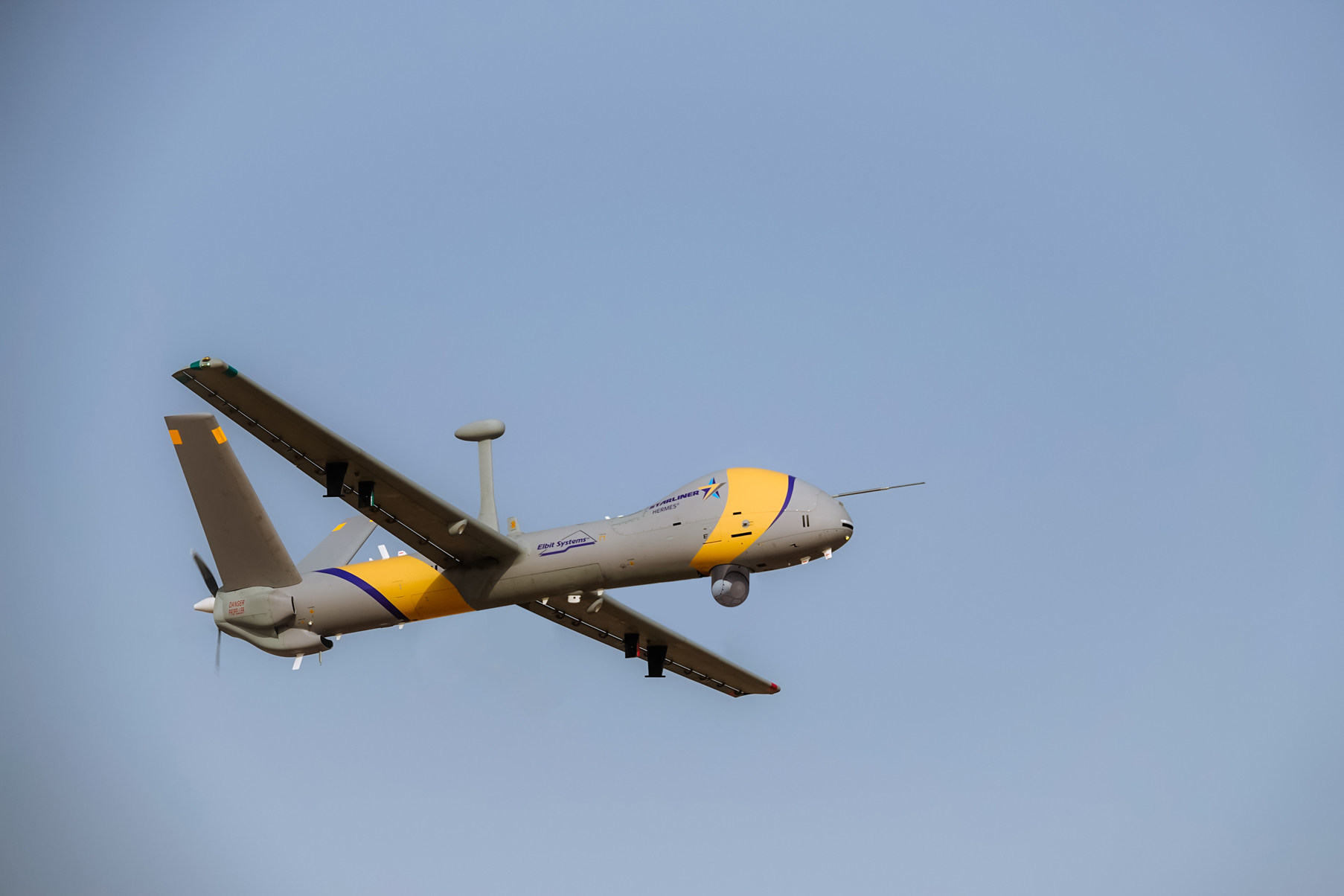Israel Certifies Unmanned Aircraft System for Integration in Civilian Airspace.
JERUSALEM, Feb. 9, 2022 — For the first time ever, the Civil Aviation Authority of the State of Israel (CAAI), which operates under the Israeli Ministry of Transport and Road Safety, has certified an Unmanned Aircraft System (UAS) for civil aviation, approving it to fly in civilian airspace as any other civilian airplane and not restricting its flight to unsegregated airspace.
Head of the Israeli Civil Aviation Authority: “This is the first time that a UAS has received a Type Certificate”
This is part of the Israeli Ministry of Transportation and Road Safety’s policy of adapting land and air transportation rules. The Ministry takes a creative approach to addressing the issues posed by technology advancements in Israel and around the world, as well as the opportunities they provide.
The receipt of the Type Certificate from the CAAI completes the compliance of Elbit Systems’ Hermes Starliner UAS with the NATO standardization for approving UAS for integration in civilian unsegregated airspace.
International aviation regulations restrict uncertified aircraft from flying in civilian airspace for safety reasons, limiting the use of unmanned aircraft systems to unsegregated airspace until recently. This is changed by the CAAI’s certification of the Hermes Starliner UAS.

CAAI oversaw the Hermes Starliner’s design and production, as well as a six-year certification procedure that included intensive ground and air testing. The tests were carried out in accordance with the International Civil Aviation Organization’s air navigation rules, airworthiness requirements, and aviation standards (ICAO).
“We are proud to issue the Type Certificate to the Hermes Starliner UAS, approving it to fly in civilian airspace as any other civil aircraft. As far as CAAI is aware, this is a world first”.
Head of the CAAI, Joel Feldschuh
“CAAI is an active partner in the ICAO effort to update international regulations to accommodate Remotely Piloted Aircraft Systems in civil airspace, and this Type Certificate granted to the Hermes Starliner UAS aligns with this international activity. This Type Certificate is the result of a fundamental process that we led for six years that included thousands of man hours, dozens of audits, laboratory tests, ground tests, intensive flight tests and thousands of documents
added Feldschuh.
Elbit Systems’ Hermes Starliner UAS, which has a wingspan of 17 metres and weighs 1.6 tonnes, can fly for up to 36 hours at a height of 25,000 feet and carry an extra 450 kg of electro-optical, thermal, radar, and other payloads.
Elbit Systems has been contracted to deliver the Hermes Starliner UAS by the Swiss Federal Department of Defence and the Canadian Ministry of Transportation, as well as other variants of the Hermes 900 UAS by a dozen other countries.
The ability for a UAS to fly above populated regions and in any civilian airspace has been granted, allowing governments, international organisations, and commercial entities to use large, long-range unmanned aircraft in missions that were previously exclusively accomplished by manned aircraft. The Hermes Starliner UAS will be able to help with border security and anti-terror operations, as well as securing large public events, marine search and rescue, commercial aviation and environmental inspection missions, and precision agriculture.
To fulfil certification standards, Elbit Systems installed sophisticated civil aviation technology capabilities onboard the Hermes Starliner UAS, a derivation of the technologically mature Hermes 900 UAS. A terrain avoidance warning system, autonomous take-off and landing in poor visibility, redundant avionics, sensors, and satellite data linkages, as well as adverse weather capabilities and direct lightning strike sustainment are among these technologies.
“We are very pleased to have achieved this international breakthrough, solidifying our leadership in the UAS market. The capability to integrate UAS in civilian airspace now enables governments as well as international and commercial organizations to leverage the unique capabilities of a sophisticated UAS in their pursuit of significantly improved security and environmental protection”.
General Manager of Elbit Systems Aerospace, Yoram Shmuely:
SOURCE Ministry of Transport and Road Safety Israel

